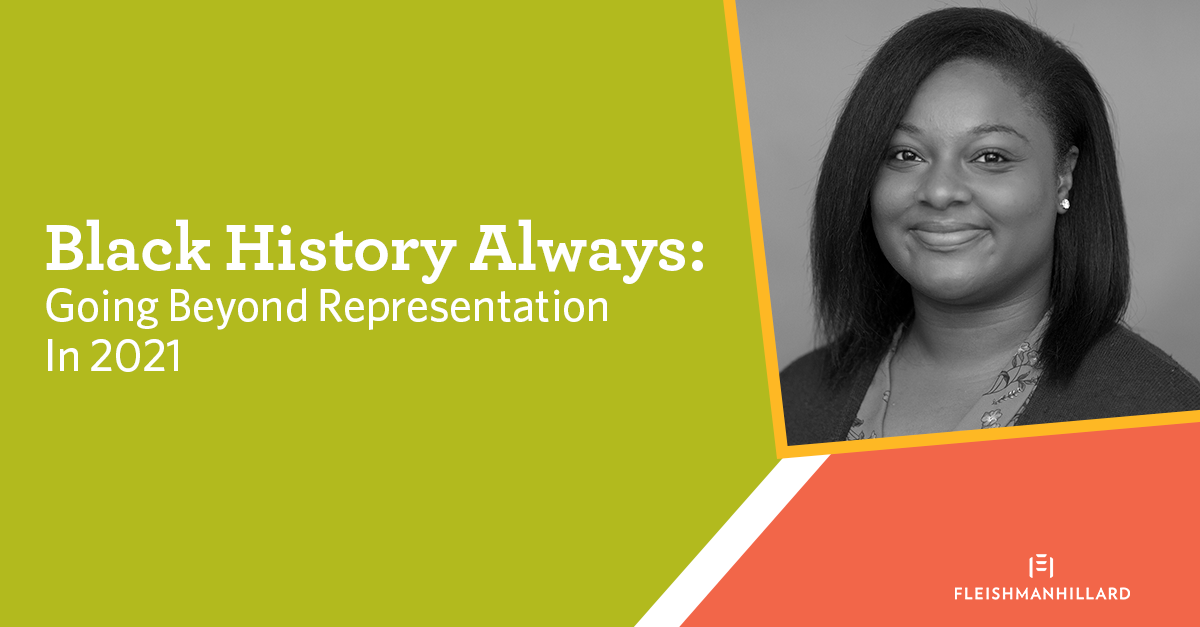Going Beyond Representation in 2021
“Representation matters.” We often hear this phrase when discussing the importance of diversity, equity, and inclusion (DE&I), or the lack thereof, across industries including media and entertainment, healthcare, education, and beyond. For my mother, a child of the sixties, knowing this reality and the limitations that some would try to place on her two Black daughters, she always encouraged my sister and me to go after every opportunity we desired — regardless of if there were people that looked like us. It is upsetting that people of color are still fighting to simply be represented. And, in 2021, it’s past time for more progress — no longer can companies be content with meeting quotas and simply getting diverse people in the door. We now know that to create lasting change, diversity must be embraced and be a part of every aspect of a company’s operations.
During the past 10 months, in particular, conversations around DE&I were elevated. Many industries were forced to confront race in ways they never had before. And with the tragic deaths of George Floyd, Breonna Taylor, and Ahmaud Arbery, and the impact of COVID-19 on communities of color, many wrestled with the reality of how deeply rooted racism and injustice are in the world.
When these events took place, we witnessed organizations putting out statements of support and announcing new diversity initiatives and positions within their companies. While these steps were a start, now is the time to think about the lessons learned, how to continue applying them and evaluate progress made.
- Be Authentic. Consumers wish to align with brands that practice what they preach. In fact, according to research done by FleishmanHillard TRUE Global Intelligence, 62% of consumers report they will look into how a company behaves when responding to issues of racial or gender inequality when considering whether to buy their product. Many were quick to call out organizations who put out statements that weren’t backed by actionable DE&I plans or whose history did not align with their promises. As a consumer, I take note of companies that not only spoke out during this time and were authentic in their approach, but were already implementing DE&I into their business and didn’t need this moment to make it part of their mission. Consumers will continue being vocal about those who appear inauthentic, and so organizations must be sure they are acting, listening and learning.
- Look Within. Think about how people of color are represented within your organization and evaluate the purpose, practices, and culture. From an organizational standpoint, is there a culture that welcomes diversity? Is diversity represented from the C-Suite on down? Is the organization creating an environment where diverse talent can grow and desire to stay? Go beyond and ask if employees are able to bring their full selves to work. As a young professional of color, I sought to work in an environment where parts of me weren’t left at the door — something I consider even when it comes to my hair, a point my colleague raised in a recent blog post. I hope to see companies continue to not only hire, mentor, and train diverse talent, but accept these individuals for what they bring to the organization. Question who your company is, who you want to be and whether you are willing to do the work to get there.
- Keep Going. This past year has shown that conversations around race and justice are more than a moment. Organizations should recognize that action goes beyond a social media post and the work continues beyond Black History Month. As a junior counselor, I try to incorporate this into the work that I do, whether it’s suggesting diverse influencers for a campaign or considering new audiences to target. Efforts around DE&I must be considered year-round.
Brands and industries have realized how integral DE&I efforts are to their success — not only in how they appeal to stakeholders and to stay competitive in the marketplace, but for their employees and workplace culture.
U.S. Vice President Kamala Harris recently expressed what my mother so fervently tried to instill in my sister and me, “You may be the first, but don’t be the last.”
What is your company doing to not only ensure there are “firsts” within the organization, but creating an environment that guarantees there aren’t any “lasts”?
